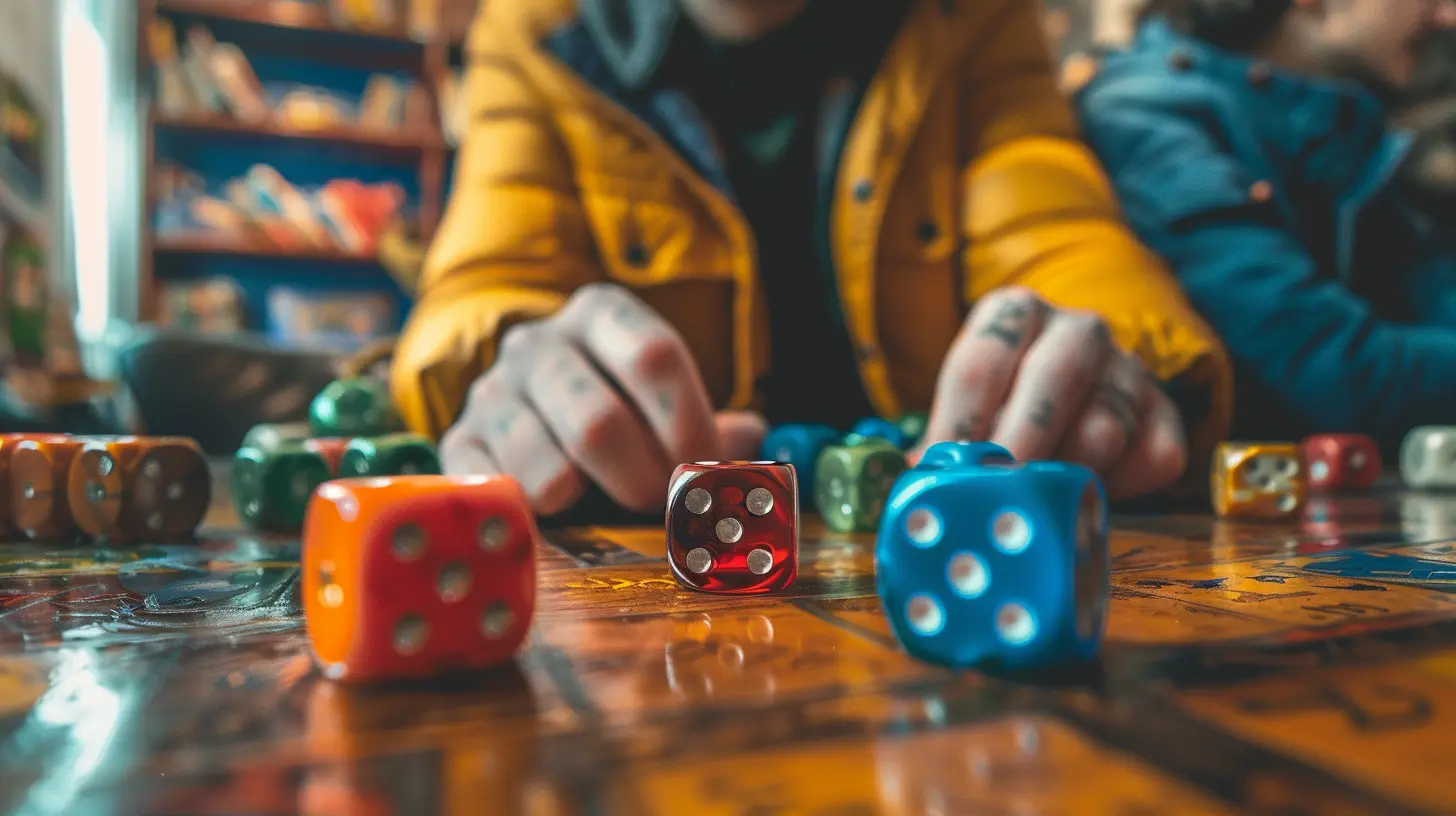Balancing Fun and Fairness: Essential Game Design Tactics
1 October 2025
When it comes to designing games, there's one thing we can all agree on: they should be fun, right? After all, who wants to spend hours playing something that feels like a chore? But here’s the catch—while fun is the heart of any great game, fairness is the glue that keeps players coming back. Nobody enjoys being steamrolled by an overpowered opponent, nor do they want to feel like they’ve won because the game handed them an easy victory.
Balancing fun and fairness is a tightrope many game designers walk, and to be honest, it’s no small feat. So, how can designers create games that are as enjoyable as they are fair? Let’s break it down step by step. 
Why Fun Matters in Game Design
Fun is the lifeblood of any game. Whether it’s the adrenaline rush of scoring a goal in FIFA, the sense of adventure in The Legend of Zelda, or the sheer hilarity of teaming up with friends in Among Us, fun is what makes players lose track of time.But here’s the tricky part: fun is subjective. What’s thrilling for one player might be mind-numbingly dull for another. Some love the grind of RPGs, while others prefer the fast-paced action of first-person shooters.
The Key Elements of Fun in Games
While fun might look a little different for everyone, there are a few core elements that tend to drive it:1. Challenge – Players love being tested. A good game pushes you just enough to keep you motivated without making you want to rage-quit.
2. Reward – Let’s not lie to ourselves; we all love that feeling of accomplishment—whether it’s earning a shiny new weapon or unlocking a hidden storyline.
3. Engagement – A game that captivates your attention from start to finish? Yup, that’s the sweet spot.
4. Social Interaction – Playing with (or against) friends adds a whole new layer of fun to games. 
Why Fairness is Non-Negotiable
Now, about fairness—this is what keeps players invested. Fun might get people through the door, but fairness ensures they stick around. If a game feels rigged or unbalanced, players are bound to bounce, fast.Imagine playing a board game where one player gets all the cool powers while everyone else gets scraps. Or picture a multiplayer game where newbies are thrown into matches with seasoned pros—it's frustrating, right? Fairness is about creating a level playing field where everyone feels they have a fair shot at succeeding.
The Dangers of an Unfair Game
An unfair game can lead to:- Player Frustration – If players feel the odds are stacked against them, they’re likely to quit.
- Unhealthy Competition – Overpowered mechanics or pay-to-win systems can lead to toxicity in the gaming community.
- Loss of Engagement – Once players lose trust in your game, it’s hard to win them back.

Essential Game Design Tactics for Balancing Fun and Fairness
So, how do you create a game that’s both fun and fair? It’s all about striking the right balance. Here are some proven tactics that game designers can use to nail this tricky formula.1. Master the Art of Playtesting
If there’s one golden rule in game design, it’s this: test, test, and test some more. Playtesting helps you identify imbalances and pain points that might not be obvious on paper. Recruit a diverse pool of players (newbies, hardcore gamers, and everyone in between) to get well-rounded feedback.Think of playtesting like cooking a complex dish. You might think you’ve nailed the seasoning, but it’s not until someone else takes a bite that you realize it’s too salty—or worse, bland.
2. Avoid Overpowered Features
It’s tempting to create jaw-droppingly strong characters, weapons, or abilities, but tread carefully. Overpowered features can ruin the fun for everyone else. Remember the controversial “noob tube” grenade launchers in Call of Duty? Yeah, players still talk about that one.Instead, aim to create features with strengths and weaknesses. A weapon might deal massive damage but have limited ammo, or a character might be fast but fragile. Balance is key.
3. Embrace Dynamic Difficulty Adjustment
Ever heard of games “reading the room”? That’s dynamic difficulty adjustment (DDA) in action. It’s a system where the game adapts to the player’s skill level.For instance, in Resident Evil 4, the game subtly adjusts the difficulty based on how well (or poorly) you’re doing. Struggling? Enemies might drop more ammo or deal less damage. Dominating the game? Expect tougher foes and scarcer resources. This keeps players engaged without making them feel punished or coddled.
4. Level the Playing Field in Multiplayer
Multiplayer games are often where fairness gets tricky. How do you make sure a newbie and a seasoned player both have a good time?- Matchmaking – Pair players with others of similar skill levels to ensure balanced and competitive matches.
- Skill-Based Progression – Unlock abilities and perks in a way that rewards skill rather than just time played.
- Anti-Toxicity Measures – Fairness isn’t just mechanical; it’s cultural. Systems like reporting tools and moderation can help curb bad behavior.
5. Design for Accessible Fun
Accessibility is another crucial part of fairness. A game might be fun and balanced, but if it’s hard to play due to poor controls or lack of inclusive design, it’s not really fair.Consider options like customizable controls, colorblind modes, and difficulty sliders. These features not only make your game more welcoming but also broaden your audience.
6. Create Meaningful Choices
One way to balance fun and fairness is by giving players meaningful decisions. A game where every choice feels impactful keeps players engaged and empowers them to forge their own path.Take games like Mass Effect. Your decisions shape everything from the story’s direction to your relationships with other characters. This agency makes every player’s experience feel unique and fair.
7. Iterate, Iterate, Iterate
Game design isn’t a “set it and forget it” process. Even after launch, it’s important to keep tweaking and balancing. Listen to player feedback, analyze data, and don’t be afraid to make changes.Remember how Fortnite regularly tweaks its weapons and mechanics based on player input? That’s a perfect example of keeping the balance fresh while maintaining engagement. 
Seeking the Balance: The Designer’s Dilemma
Here’s the truth: achieving the perfect balance between fun and fairness is more art than science. There will always be trade-offs, and no game will ever be perfect for everyone. However, by focusing on player experience, staying open to feedback, and prioritizing fairness, designers can create games that stand the test of time.Think of it like crafting a recipe for the ultimate dish. You need just the right mix of sweet and salty, spice and crunch. Too much of one ingredient, and it all falls apart. But when you nail that balance? Chef’s kiss—it’s perfection on a plate.
Wrapping Up
In a nutshell, balancing fun and fairness is the heartbeat of successful game design. It’s no easy task, but it’s absolutely worth the effort. Keep players engaged with challenging, rewarding gameplay, and ensure fairness through thoughtful design choices.As a game designer, your ultimate goal should be to create worlds where players can immerse themselves, compete on an equal footing, and most importantly, have fun. Sure, the path to a perfectly balanced game might be littered with trial and error—but hey, isn’t that part of the adventure?
all images in this post were generated using AI tools
Category:
Game DevelopmentAuthor:

Greyson McVeigh
Discussion
rate this article
1 comments
Silas McGinn
Fun and fairness? The ultimate game design tag team! Let’s play!
October 21, 2025 at 4:58 AM

Greyson McVeigh
Absolutely! Striking a balance between fun and fairness is crucial for engaging gameplay. Let’s dive in!


